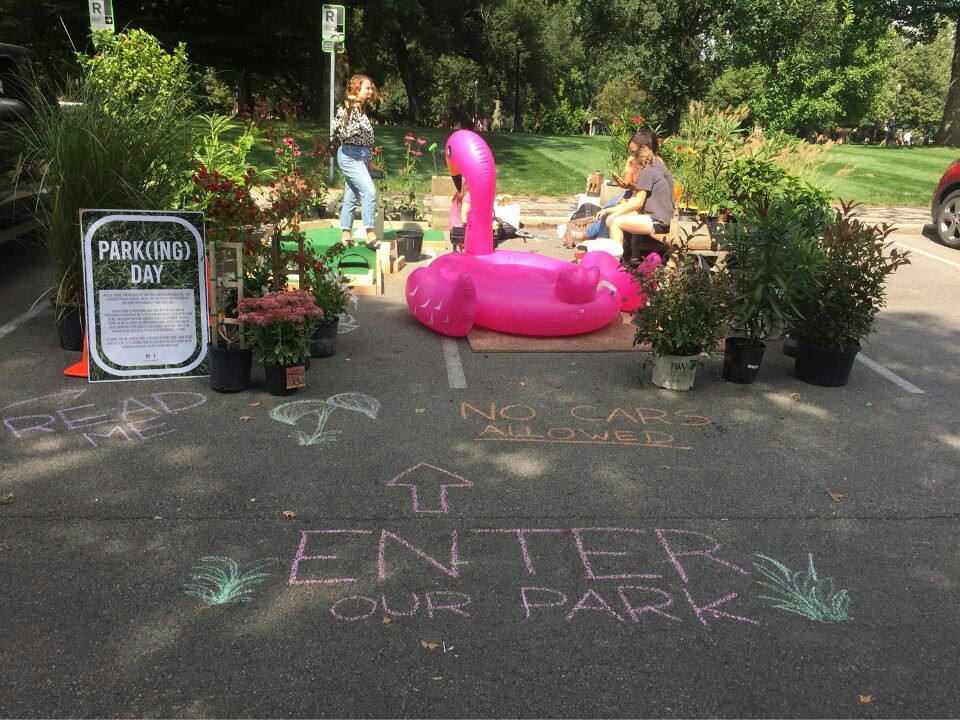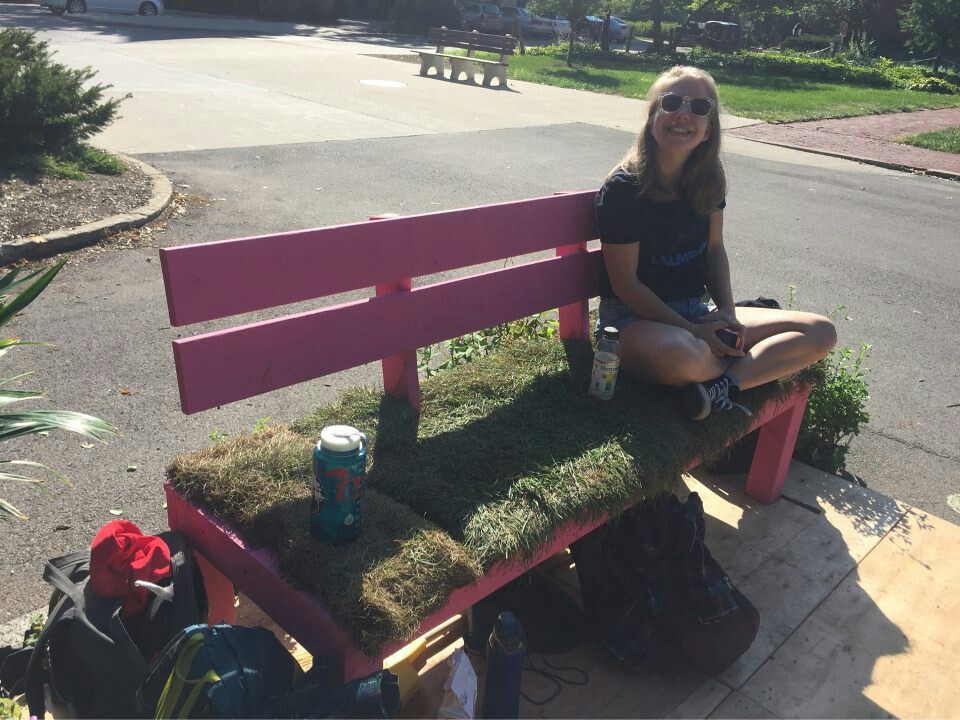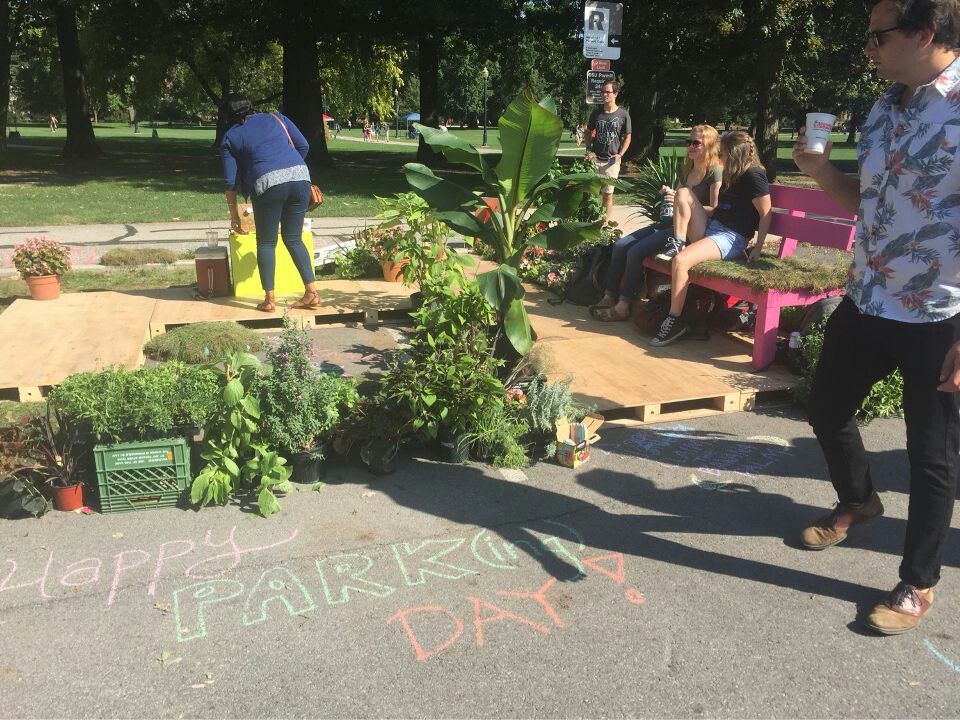Courtesy of @bridget_hake from Kansas State University Student Chapter of ASLA
A study by the Research Institute for Housing, released earlier this year, found that parking takes up an incredible amount of space in cities across America. On-street parking, off-street surface parking lots, and off-street parking structures (garages) all support daily commutes in personal vehicles, and they all take up plenty of private and public space. What if the spaces dedicated for cars to lie idle, were redesigned as places for people to “park” ?
This question led to the creation of PARK(ing) Day in 2005. PARK(ing) Day is an annual, open-source global event where citizens, artists, and activists collaborate to temporarily transform metered parking spaces into “PARK(ing)” spaces, where the same 9ft x 18ft asphalt rectangle is transformed into a temporary public space. PARK(ing) Day takes place annually on the third Friday of September, with this year’s event slated for September 21st.
PARK(ing) Day started when group of urban design collaborators were inspired to activate and transform a single metered parking space in San Francisco into a temporary public park. According to the founders of PARK(ing) Day, the event is supposed to call attention to everyday use of public space, and the need for more open urban social spaces in cities today.
Rebar Group Inc., the founder of the PARK(ing) Day movement, offers a how-to manual to get involved and transform your own parking space. The American Society of Landscape Architects (ASLA) is a big supporter of PARK(ing) Day, and this year the Ohio chapter will be transforming a parking space at 1114 Race Street in Cincinnati. The student chapter of ASLA at the Ohio State University transforms a parking space on main campus every year in honor of PARK(ing) day (click through the gallery below for pictures from the OSU SCASLA 2017 installation).
There might be as many as 2 billion parking spaces across the country, and at 162 square feet per spot, a significant portion of our daily landscape is dedicated to parked cars. Revitalizing our cities and using land in intelligent and economically competitive ways means that parking will always be part of the conversation, but events like PARK(ing) Day create the opportunity to re-envision the social, environmental, and spatial potential of parking lots in our cities and urban centers.






